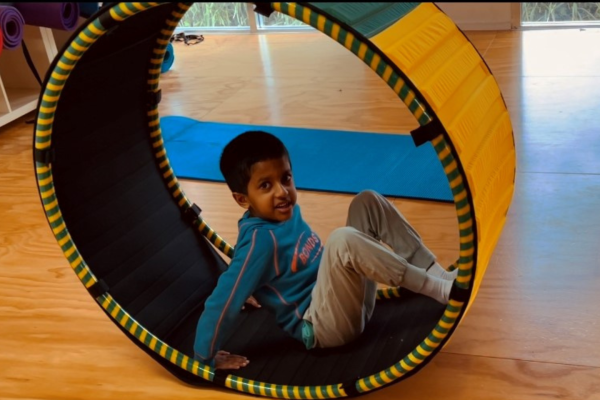
Managing meltdowns: tips to help you and your child cope
By Raelene Dundon
When a child is in meltdown, it can be distressing for everyone involved. In this article, I will help you understand why children have meltdowns and how to prevent them and give you some effective ways of supporting children when a meltdown occurs.
What is a meltdown?
A meltdown is an automatic and intense physical and emotional reaction to stress. When a child feels threatened, unsafe or overwhelmed, this automatic response in the brain and body (often called fight or flight) is triggered to keep us safe. While this response might be helpful if we are in physical danger, it is not usually a useful reaction to stress in everyday life.
For children who are very sensitive to possible threats in their environment, meltdowns can happen regularly and have a negative impact on their lives. Meltdowns can be triggered by many things including sensory experiences, demands, confusion, anxiety, or feeling unsafe. As adults, we may not think that a situation is threatening, but it is the child’s perception that is important. If they feel threatened, their brain and body will respond automatically.
A child in meltdown might scream and yell, hit, kick, throw things, cry or harm themselves. While anyone can experience a meltdown, they are most often experienced by children with developmental disabilities and neurodivergent conditions like developmental delay, intellectual disability, autism, ADHD and trauma.
It is important to know that during a meltdown, the survival part of the brain takes charge and the thinking part of the brain goes offline, making it hard for a child to think and listen. A child in meltdown is a child who is not in control of their words and actions – they are not deliberately trying to manipulate the adults around them.
How can we prevent a meltdown?
Once a child is in meltdown we can’t stop it, we need to ride the wave and allow it to run its course. But if we act before the meltdown occurs, we can often stop it happening. Here are some tips for supporting children when they are heading towards a meltdown:
Know your child’s stress signals
Children often show signs of stress in subtle ways that they may not even be aware of (e.g. twirling hair, stimming, talking loudly, pacing). When we know the signs that a child is becoming stressed, we can often act to support them to calm and prevent the meltdown occurring.
Stay calm
Emotions are contagious and when we can see a child is escalating it can be distressing for us too, but a stressed adult cannot calm a stressed child. We need to meet their stress with our calm to bring them down. This is called co-regulation. Recognising signs of our own stress and learning ways to calm in the moment can assist us to better support children in distress.
Give in to avoid conflict
When a child is approaching a meltdown, sometimes the best thing to do is give the child what they want. This sounds like the opposite of what many of us consider good parenting, but it makes a lot of sense. As I mentioned earlier, when a child is distressed, their thinking brain goes offline. This means that giving them what they want will not reward the distressed behaviour because their brain cannot take in the information effectively. So, if it is possible to give a child what they want in the moment to stop a meltdown, this is a good outcome. It is then up to us to plan for the next time the child is in that situation so that they can manage without becoming upset (e.g. supporting the child to develop new skills, preparing the child for what to expect to avoid disappointment).
Reduce demands
Demands can often be seen as threatening to a child, especially if they are already in a stressed state, so reducing or removing demands can help avoid a meltdown.
This might mean putting off a chore until later, taking a break from a task, or maybe giving it a miss altogether to support the child to regulate.
Use humour and distraction
Have you ever noticed that it is hard to be angry or scared when you are laughing? Making a joke or getting in touch with your silly side can be a great way to diffuse a stressful situation and stop a child reaching meltdown. It can also be helpful to distract a child by talking to them about an interest or bringing something novel to their attention.
Offer sensory supports
When a child is becoming stressed, their nervous system is usually dysregulated. Sensory input can be a powerful way to help a child to regulate. If your child has preferences for sensory materials that help them feel safe and calm (e.g. fidget toys, soft blankets, music, a tent and cushions), giving them access to those items when they are becoming distressed can be a great way to support them to prevent a meltdown.
What can we do when a child is in meltdown?
Sometimes, despite our best efforts, a child may still go into meltdown. While a meltdown can’t be stopped once it has started, there are things you can do to help you and your child to get through it safely:
Stay calm
Co-regulation is key here. As we discussed earlier, being calm will support your child to calm.
Avoid eye contact
Looking at someone directly in the eyes can be interpreted as threatening, especially if they are already in a stressed state, so keep your eyes down wherever possible.
Slow your movements
Moving quickly can startle a child and cause them to become more stressed or dysregulated. Slowing your movements reduces the chances of escalating the child further.
Keep your distance
Approaching a child in meltdown can be dangerous if the child is acting out, but can also be seen as threatening to the child. Try and keep a safe distance away so the child can see you are there with them, but without putting yourself in harm’s way. If you must move towards a child in meltdown, calmly and quietly tell them what you are doing.
Use few words and a quiet voice
Remember that the child’s thinking brain is offline during a meltdown so their ability to listen and understand will be reduced. Keep talking to a minimum and use a calm and quiet voice to avoid overloading them.
Be cautious of touch
Touch can be interpreted as a threatto a child in meltdown, and can be traumatising to children who have previously been restrained. It should be a last resort to touch a child in meltdown unless they seek you out for physical comfort, as making physical contact while a child is extremely distressed is more likely to result in injury to you or to your child.
Remove others
Where possible remove others around your child to ensure their safety and to prevent increased stress due to being watched.
How can we help after a meltdown?
After a meltdown, a child is often completely exhausted and may not even remember what has occurred. Similar techniques to those we discussed when a child is escalating can be used to support them to continue to calm. It is important not to punish a child for what they have done during a meltdown, remembering that they were not in control of their actions. Instead, we need to try to understand why the meltdown occurred, and what we can do to help prevent a meltdown in the future. It is also important to seek support and debrief with someone you trust to make sure you are taking care of yourself.
As children grow and develop, they sometimes do not have the ability to manage stressful and challenging situations effectively, which can result in meltdowns. As adults, we have the power to adapt the environment around our children to set them up for success.
Raelene Dundon is an Autistic Educational & Developmental Psychologist, author and presenter, and runs Okey Dokey Childhood Therapy in Melbourne, Victoria, with her husband, Andrew. Raelene’s husband and children are also Neurodivergent, and she draws on her personal and professional experience to provide support to children and families. okeydokey.com.au







